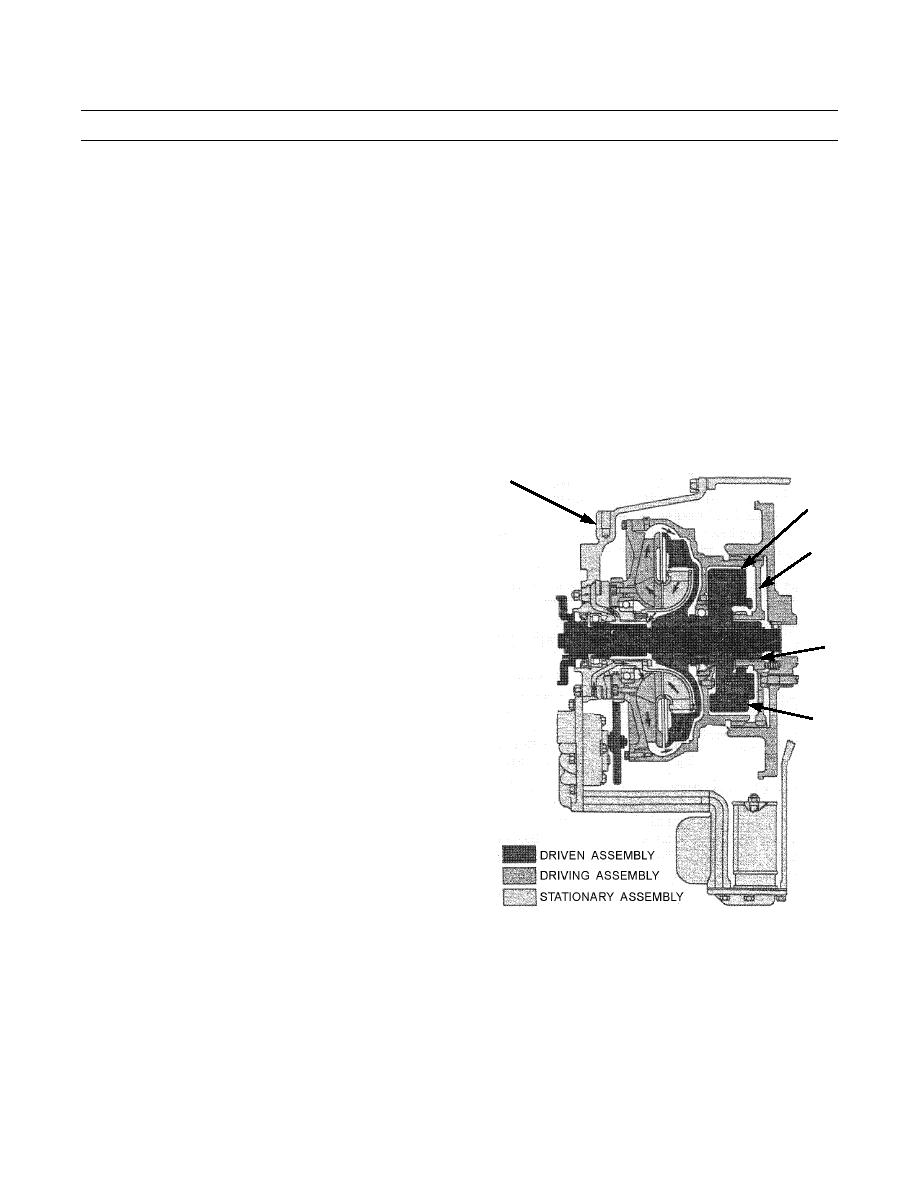 |
|||
|
|
|||
|
Page Title:
TRANSMISSION THEORY OF OPERATION |
|
||
| ||||||||||
|
|
 TM 5-2410-237-23
TRANSMISSION THEORY OF OPERATION
TORQUE DIVIDER
1.
The torque divider connects the engine to the planetary transmission. This connection is both a hydraulic connection and
a mechanical connection. The hydraulic connection is through a torque converter. The mechanical connection is through
a planetary gear set.
2.
The torque converter uses oil to multiply the torque to the transmission. When the machine is working against a low
load, the torque multiplication is low. When the machine is working against a high load, the torque multiplication is
higher. A higher torque can then be sent to the transmission during high load conditions. The planetary gear set also
multiplies the torque from the engine by making an increase gear in the mechanical advantage through it gears. This
torque multiplication also makes an increase as the load on the machine becomes higher. During no load conditions, nei-
ther the torque converter nor the planetary gear set can multiply the torque from the engine.
3.
Oil for the operation of the torque converter is from the transmission hydraulic controls. A relief valve for converter
inlet controls the pressure of the oil to the torque converter. A relief valve for converter outlet controls the pressure of
the oil in the converter.
TORQUE DIVIDER OPERATION
1.
The torque converter is driven by the engine through
1
housing (1). The planetary gear set is driven by the
engine through sun gear (2). These connections let the
3
torque output of the engine go in two separate direc-
tions. Because of the larger radius of ring gear (3),
2
most of this torque is sent by the torque converter
through the ring gear to planetary gears (4). The
remainder of the torque is sent by sun gear (2) to plan-
etary gears (4). If planetary carrier (5) has no resis-
tance to rotation (no load), sun gear (2), planetary
gears (4), planetary carrier (5) and ring gear (3) will
5
turn at the same speed. The torque from the converter
and from the planetary gear set is now through the
planetary carrier to output shaft (6) and the planetary
transmission. Neither the torque converter nor the
4
planetary gear set can multiply the torque from the
engine when they are turning at the same speed.
387-635
2.
When the machine has a load, planetary carrier (5) has a resistance to rotation. Since sun gear (2) is turning at the rpm of
the engine, this resistance to rotation causes planetary gears (4) to turn on their shafts. Their rotation is opposite the rota-
tion of the ring gear (3). This causes a decrease in the speed of the ring gear. Since turbine (7) is connected to the ring
gear, a decrease in speed will cause the torque converter to multiply the torque of the engine from housing (1). The
torque multiplication is sent to planetary carrier (5) and the output shaft through the ring gear. With the decrease in the
speed of the ring gear, the torque of the engine through sun gear (2) and the planetary gear set also multiplies. This
torque multiplication is also sent to planetary carrier (5) and the output shaft.
|
|
Privacy Statement - Press Release - Copyright Information. - Contact Us |